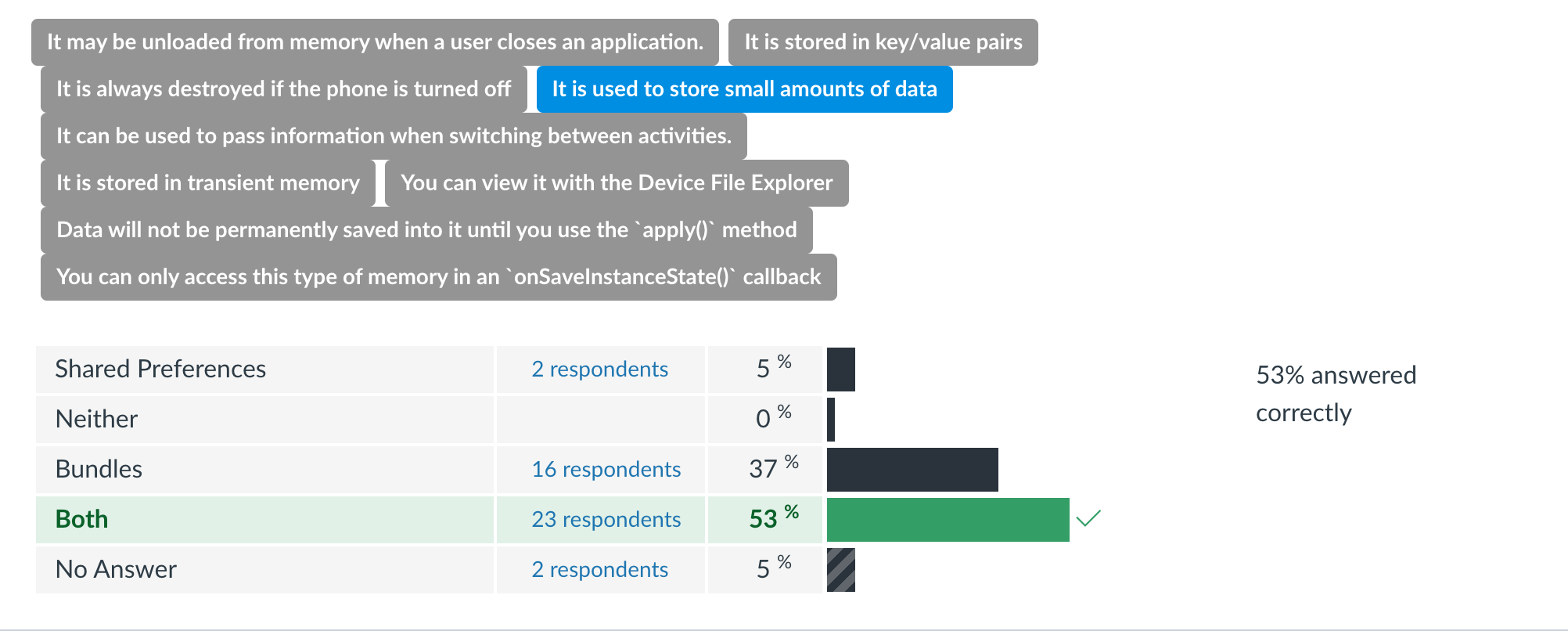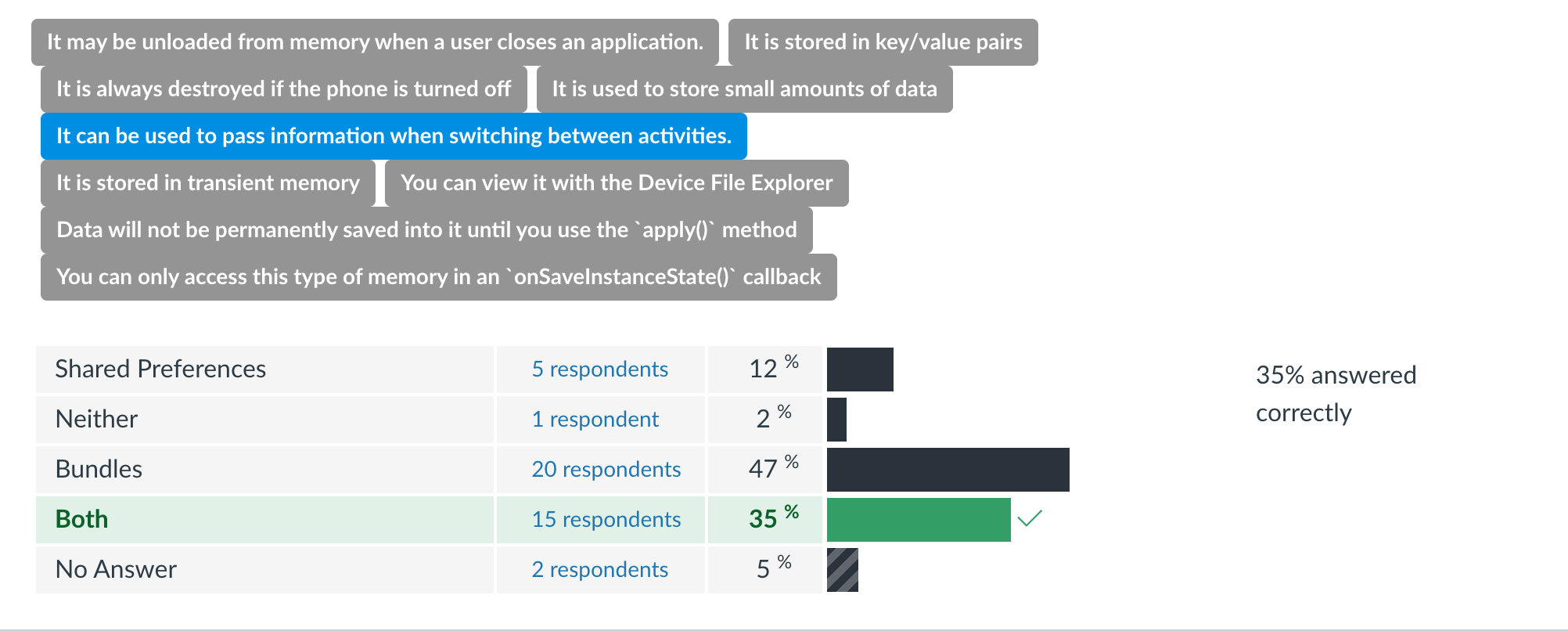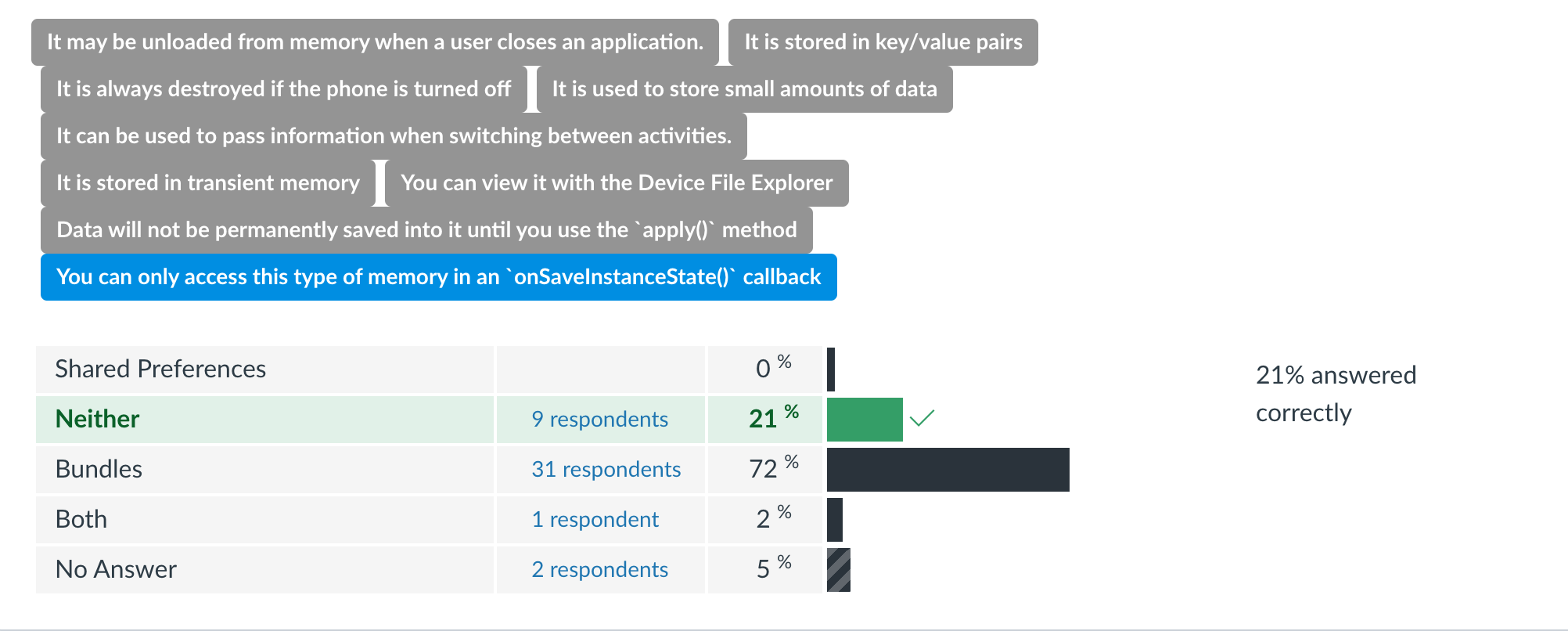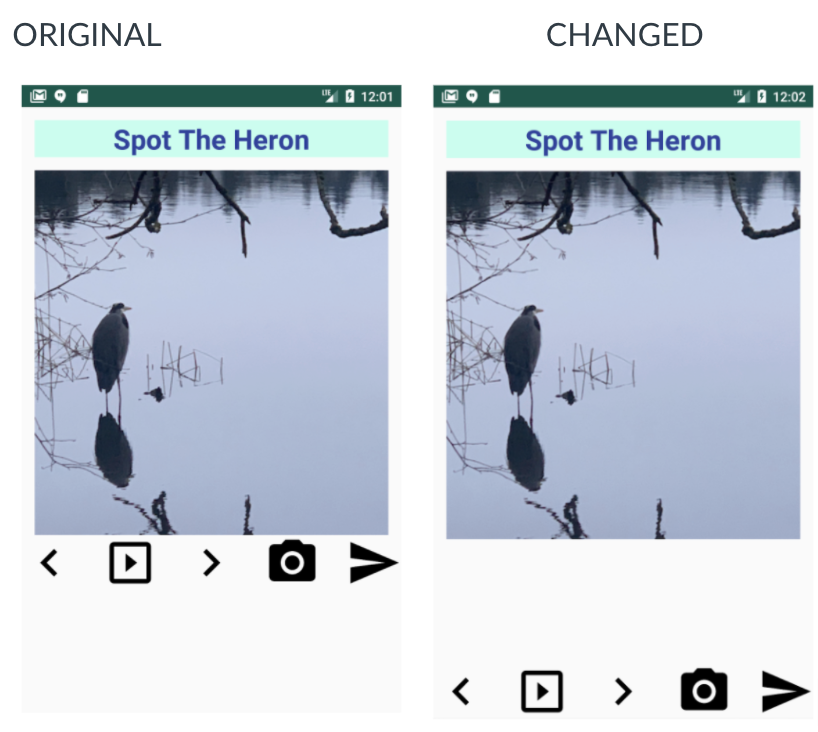name: inverse layout: true class: center, middle, inverse --- # Practice Quiz 7 Review Lauren Bricker CSE 340 Spring 2021 --- name: normal layout: true class: --- # Storage .left-column30[ Which of these statements is true of Bundles, SharedPreferences, Both, or Neither? (This was a question to see how deeply you were thinking about memory) ] .right-column70[  ] --- # Storage .left-column30[ Which of these statements is true of Bundles, SharedPreferences, Both, or Neither? (This was also question to see how deeply you were thinking about memory) ] .right-column70[  ] --- # Storage .left-column30[ Which of these statements is true of Bundles, SharedPreferences, Both, or Neither? (This was also question to see how deeply you were thinking about memory) ] .right-column70[  ] --- # Oops. The question about "Select all of the following statements which are true about Shared Preferences" was supposed to be removed when I replaced it with Question 1. --- # Fitts' Law review After looking at the first version of the app (at left) you change it to make interaction easier. Did you succeed? .left-column40[  ] .right-column60[ How are Size and Distance different and how does this change the Index of Difficulty (ID) according to Fitts’ Law on a **phone screen** (meaning you can assume the app is taking up the whole screen of a phone and the pointer is a finger). Size? Distance? ID? ] --- # Fitts' Law review After looking at the first version of the app (at left) you change it to make interaction easier. Did you succeed? .left-column40[  ] .right-column60[  ] --- # Sensors You have been asked to implement an app to determine if the user is moving in a car and block messages to the user. List at least 2 sensors on the phone might you use to determine this and why did you pick those particular sensors? - Messaging, Location (from the next question) - Often selected - Accelerometer - GPS - Interesting ones: - time - Microphone - Wifi - bluetooth (if connected to the car) - Fingerprint? --- # Snapshot vs Fence You have been asked to implement an app that will block any messages that come to the phone as long as the user is travelling in a car. Would a snapshot or a fence be a better approach for each of the following sensors? - Location -> Snapshot: Only by checking it at fixed intervals can you determine whether the phone/user is changing fast enough to indicate driving. You can also use a snapshot of the location to determine if the user/phone is on a road. (35% correct) - Screen -> Fence: You don't really need to know about the Screen turning on until it happens (37% correct) - Messaging -> Fence: You don't really need to know about Messaging being used until it happens (65% correct) --- # Context-aware app You have been asked to implement an app to determine if the user is moving in a car and block messages to the user, using sensing. What type of [context aware app](/courses/cse340/21sp/slides/wk06/ml.html#28) is this?  ??? adaptive changes operation or timing